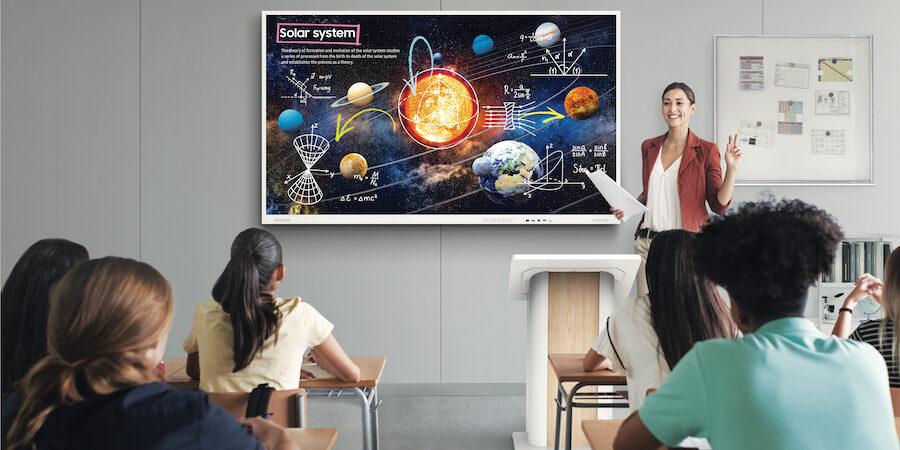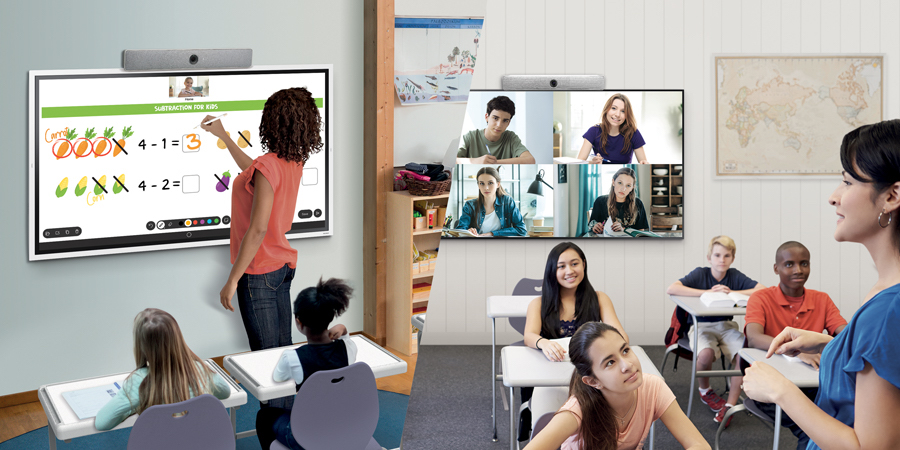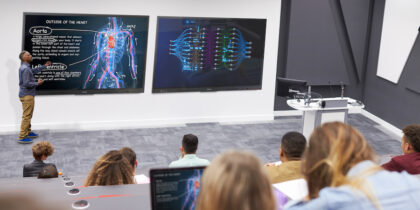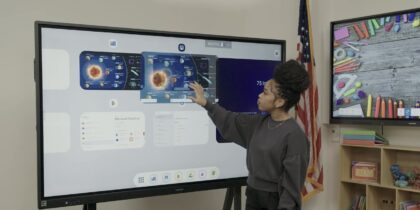Schools and their districts often make tech purchasing decisions based on the ability of the technology to meet a few predetermined goals, as well as its overall cost and whether it fits in the budget. However, it’s increasingly important to shift the conversation to focus more on the needs of students — to prioritize equipping them with the skills and resources to become agents of change in a global context. The goal of any hardware or software tool should be to ensure that long-term educational needs are addressed and met. This means looking beyond the immediate needs of the present and taking a more holistic approach to understanding the impact of the technology on educational outcomes in the future.
I am old enough to remember when technology integration in schools was a fairly new phenomenon, and I was always the first to adopt new technology in my classroom. I was keenly aware of the fact that as a teacher, I served as a trusted advisor, but little did I know I was also a brand advertiser. When I used a new technology, I was promoting its use. When I said things like, “I love this program” or “This device is my favorite,” I was acting like a product endorser. As a result, I became more mindful of how I spoke about the technology I used.
It was around the same time that technology was flooding the classroom that the four Cs of 21st-century skills became more popular, giving educators a more universal way of talking about the skills (and ethics) that should be promoted in the classroom. These skills — critical thinking, communication, creativity, and collaboration — have become de facto standards in most schools in the United States and beyond.
Now that we are nearly a quarter into the 21st century, it is worth assessing our progress in pursuit of these goals, not only in the lessons we teach and activities we assign but also in the technology purchasing decisions we make or influence. This is an extension of a framework I call “think open.” To think open means to think bigger and broader than short-term, short-sighted goals.
It means considering the ethical ramifications of your technology purchasing decisions and how those decisions support the four Cs of 21st-century skills.
1. Critical thinking
When critically thinking about technology, ask yourself, “Is this tool capable of accomplishing the primary tasks we need it to?” Notice, I didn’t say, “Does it have all the bells and whistles?” or “Can it do more than other tools?” More does not always mean better, especially when considering your primary needs, cost, and compatibility with other tools you already use. A good way to determine your needs is to list them and then rank them, critically asking, “What are the must-have features?” and “What are the nice-to-haves?”
This process should always be done in collaboration with the end user, not just with the end user “in mind,” but actually present and part of the discussion. Slowing down and involving the teachers who will be implementing the technology and the students who will be using the technology is a great way to determine your top needs and ensure buy-in.
2. Communication
It is critical to think about how technology helps educators and learners communicate with one another in the classroom and beyond. Learning takes place not only in the classroom during a period or block but also when students are commuting home and working on their school-issued devices and personal devices at home, in restaurants, libraries, coffee shops, and countless other places. Are we making purchasing decisions that allow students to easily and seamlessly continue their work on diverse devices and in various locations?
Blended learning without limits
Simple, scalable and secure display solutions empower educators to take control of curriculum. Download Now
Does the hardware or software accommodate neurodiverse learners by providing accessibility features such as low-contrast mode, closed captions, language translation, and annotating? Consult with your special education specialist or team for additional support in this area. Another question that technology directors, integration specialists, and coaches should consider is how well the technology integrates with services your school already uses. For example, does it utilize single sign-on or other integration services that work well with your learning management system and student information system? When evaluating technology through the lens of the four Cs, communication is both interpersonal and interoperable.
3. Creativity
Have you ever noticed that in formal education in the U.S., we tend to overemphasize skills related to the left hemisphere of the brain, namely critical thinking (test-taking skills) and communication (written essays)? Technology has opened the door for much deeper learning and multiple modes of expression, but too often we limit visual and verbal expression to elementary education and electives such as art and computer science.
The reality is that we are all whole-brained individuals, and learning is enhanced when learners have the ability to express themselves and share their learning through multiple means. As you critically think about your must-haves, be sure to add “creative expression” to your list. Does the technology allow learners to share their own drawings, graphic designs, spoken word, or videos? This can be a built-in feature of an application or allowed by hardware that integrates with other services. Are there creative ways to accomplish some of your desired goals that differ from your original thinking? Can students and teachers come up with creative solutions to some of the perceived limitations of the application or hardware you are evaluating? If the answer is yes, you may be promoting the necessary skill set of creative problem-solving!
4. Collaboration
In all the examples above, there is an inherent need for the technology-purchasing decision-makers to collaborate with the people most affected by those decisions. Further, it should be noted that learners having the ability to collaborate with each other, the educator, and potentially with other classrooms across the globe is essential. A simple way to ensure collaboration is implemented is by asking, “Does this hardware or software allow everyone to interact with it at the same time? Does this technology promote isolation and individualism or foster interaction and interdependence?” If the latter, you have a winner. Out of all the features that technology affords, collaboration is king.
Bonus: Cost-efficiency
I didn’t use the term “cost-effective” because it’s often too ambiguous and subjectively judged. Instead, by asking if something is efficient, you force yourself to ask if the tool accomplishes multiple tasks, possibly even eliminating the need for another tool or additional costs in the future. When thinking of our ethical questions again, it’s important to also ask if the software or hardware we are evaluating has essential features tied to ongoing license fees, which are often referred to as “golden handcuffs” in the tech world. “Golden handcuffing” is the practice of locking you into an ecosystem by making it too difficult to leave.
When you consider the costs already accumulated and the lack of ease in transitioning to another tool in the future, you may realize that it’s less expensive financially and emotionally to stay with the tool you already have. Returning to our ethical questions, I would often ask my high school students, “What if a person lured you into a relationship and then made it physically and financially difficult for you to leave?” Cost-efficiency asks how far your dollars can stretch and how effectively your dollars work for you, not against you, in the long run.
Simple enough, right? Though not as straightforward as simply comparing the features of two competing products and how much your school or district can afford, asking these questions related to the (now) five Cs will lead you to the more ethical decision — the one that’s in line with your educational goals and sustainable for long-term success.
Learn more about why interactive learning matters and how prioritizing the purchase of the right technology can improve student outcomes in this free guide — and explore the latest Samsung educational technology and solutions here.








